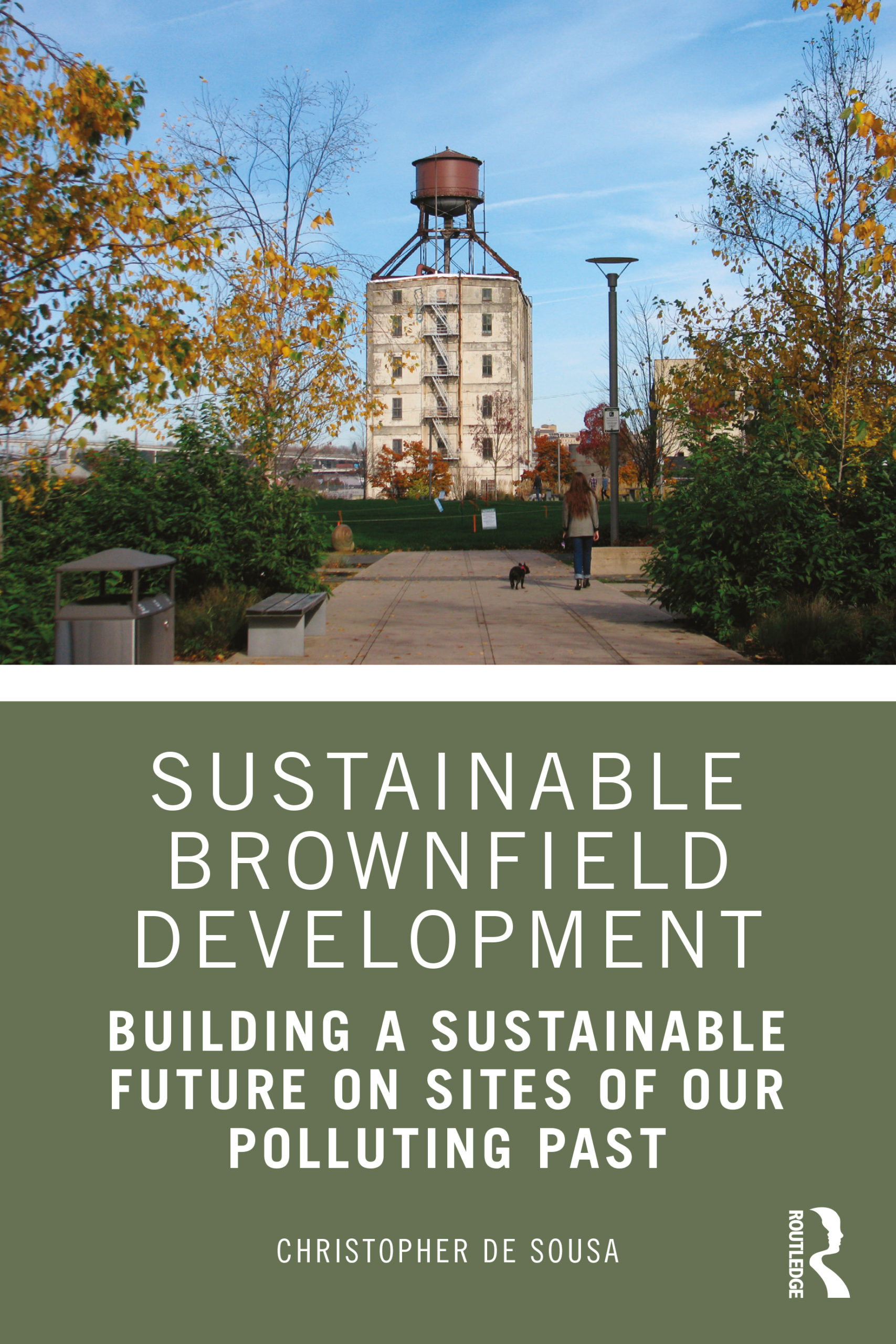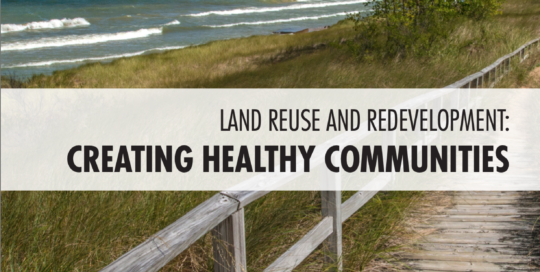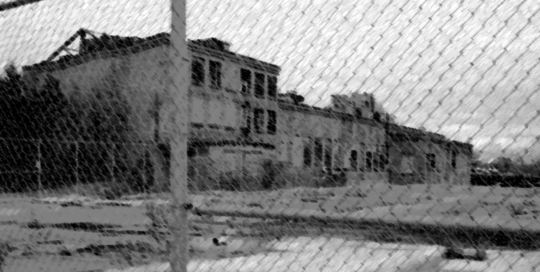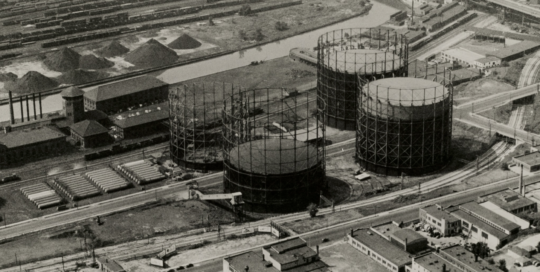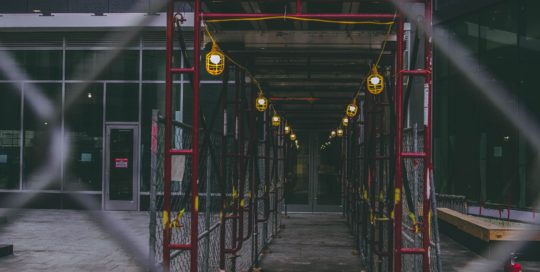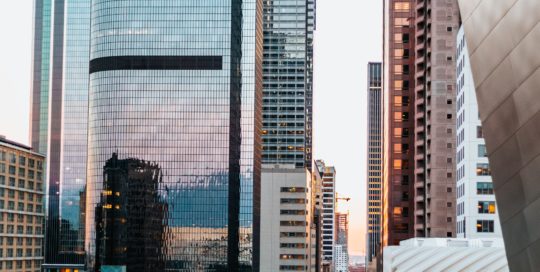Sustainable Brownfield Development: Building a Sustainable Future on Sites of our Polluting Past by Christopher De Sousa MORE ABOUT THE BOOK Sustainable Brownfield Development: Building a Sustainable Future on Sites of our Polluting Past tells the stories of two dozen brownfield projects in the United States that have incorporated sustainability, highlighting project features, best management practices, and lessons from the field regarding the underlying policies and practices that enabled these projects to be completed or, in some cases, stalled, altered or abandoned. The case studies represent an array of brownfield projects that aimed to go beyond conventional practice and include a range of sites and end uses (e.g., corner gas stations, industrial, office, residential, brightfields, green space, mixed-use, and transit-oriented developments). Sustainable Brownfield Development will be of interest to developers, planners, consultants and community representatives interested in environmental policy, urban planning, community development, ecological restoration, economic development, and parks planning by providing direction and inspiration for those eager to erase the blight of the past and build a more sustainable future. The book is available at: https://www.routledge.com/Sustainable-Brownfield-Development-Building-a-Sustainable-Future-on-Sites/Sousa/p/book/9780367359454
LAND REUSE AND REDEVELOPMENT: CREATING HEALTHY COMMUNITIES
Christopher DeSousa 2020-11-19T10:26:34-05:00LAND REUSE AND REDEVELOPMENT: CREATING HEALTHY COMMUNITIES READ THE FULL REPORT Land Reuse and Redevelopment: Creating Healthy Communities is a free textbook published by the US Agency for Toxic Substances and Disease Registry, written by multiple contributors, and is a community resource providing guidance on reusing land safely. It’s also about resilience, partnerships, and sustainability. How land is used and reused can affect public health. There are hundreds of thousands of potentially contaminated sites that were formerly used as industrial, commercial, or residential properties. These sites are called brownfields or land reuse sites. Former gas stations, manufactured gas plants, factories, dry cleaners, and abandoned properties are typical sites that may have people living or working in close proximity to them. Unfortunately, many of these sites are contaminated with harmful chemicals or may even have been redeveloped without proper environmental oversight. These sites may lead to harmful chemical exposures for children and adults. All rights reserved. No portion of this book may be reproduced in any form without permission from the publisher, except as permitted by U.S. copyright law. For permissions contact: atsdr.landreuse@cdc.gov Note: Dr. Christopher De [...]
The State of Brownfields in Canada
Catherine Huynh 2018-11-21T07:54:00-05:00The State of Brownfields in Canada The management of brownfields continues to be an important issue for Canadians eager to clean up the tens of thousands of polluted sites across the country and to reap the socio-economic benefits of their reuse. While risks and liabilities associated with contamination severely impeded cleanup in the 1980s and 1990s, legal and procedural efforts introduced in the 2000s sought to support reuse. Many of these efforts were guided by an influential report published in 2003 by the National Round Table on the Environment and the Economy (NRTEE) entitled A National Brownfield Redevelopment Strategy for Canada that outlined the sustainability-oriented benefits associated with brownfields redevelopment, along with its key financial, regulatory, and political challenges. The strategy also put forward a “blueprint for action” with fourteen recommendations that advocated for public investment to address remediation and redevelopment costs, an effective public policy regime to manage liability and risk, and raising community awareness of the brownfields issue. To honor the 15th anniversary of this influential report, the Canadian Brownfields Network (CBN) along with researchers from Ryerson University coordinated a multifaceted review to explore policy [...]
Overcoming barriers and facilitating brownfields redevelopment in the GTHA: A review of results from interviews with private sector stakeholders
Catherine Huynh 2018-11-21T07:59:51-05:00Overcoming barriers and facilitating brownfields redevelopment in the GTHA: A review of results from interviews with private sector stakeholders The redevelopment of brownfields is seen to offer communities a “triple benefit” in terms ofremediating pollution, removing neighbourhood blight, and providing new development and employment. It is for this reason that the Ontario government, through its Provincial Policy Statement and the Growth Plan, explicitly promotes brownfield redevelopment as an opportunity for intensification and more sustainable growth. Provincial ministries and municipalities have also implemented a range of policy, funding, and technical assistance tools tofacilitate cleanup and redevelopment by the private market. Indeed, Ontario’s model, combined with a relatively strong real estate market, has resulted in over 4,000 cleanup and redevelopment projects between 2004 and 2014. This points to the opportunity, already unlocked by the market via the existing policy regime, and the importance of figuring out ways, to promote the model further. READ THE FULL REPORT
Menomonee Valley
Catherine Huynh 2019-07-08T19:56:19-04:00Menomonee Valley READ THE FULL REPORT The 1,200-acre Menomonee Valley has always played a central role in the economic life of Milwaukee. Flowing through it is the Menomonee River, which provided Native Americans with a canoe route from Lake Michigan into the interior and abundant resources, including menomin (Algonquin for wild rice). In the new millennium, renewal of the Valley focused on addressing key physical barriers, such as transportation access and soil contamination, and realizing a more sustainability-oriented vision for the district. Redevelopment of the 140-acre Milwaukee Road Shops property into the Menomonee River Valley Industrial Center exemplified this approach. This project’s success in the face of a global economic downturn triggered additional development throughout the Valley. To date, these projects have resulted in the cleanup and reuse of hundreds of acres of derelict property, the creation of thousands of family-supporting jobs, the construction of dozens of green buildings, the restoration of numerous acres of native habitat, the Three Bridges Park, the attraction of millions of visitors annually, and the physical, economic, and prideful reconnection of the Valley to the city.

Cleanup and Smart-In-Up: A look at Ontario’s efforts to connect brownfields remediation, infill development and regional growth planning
Catherine Huynh 2018-11-21T08:04:42-05:00Cleanup and Smart-In-Up: A look at Ontario’s efforts to connect brownfields remediation, infill development and regional growth planning The Ontario Government has prioritized the redevelopment and intensification of brownfields (previously used and potentially contaminated lands) to accommodate urban growth in key strategic areas. This blog draws on three research studies to examine progress in the assessment, remediation, and redevelopment of brownfields in Ontario since late 2004, when the government updated the cleanup regime and started implementing urban intensification strategies. Overall, the research finds that brownfield reuse activity has been rather extensive in scale, character, and value during the time periods examined, particularly in Toronto’s strong market. Notwithstanding the important barriers identified by the private sector, cleanup and planning policy seem to be working together. Dense redevelopment is occurring in areas identified by the provincial growth plan and by municipal Community Improvement Plans (CIP), thus aligning with the prime sustainability objective of growing in and up instead of out. Changing land use and increasing density in CIP and other locations seem to be key municipal tools for supporting brownfield reuse, although more can be done in terms of [...]
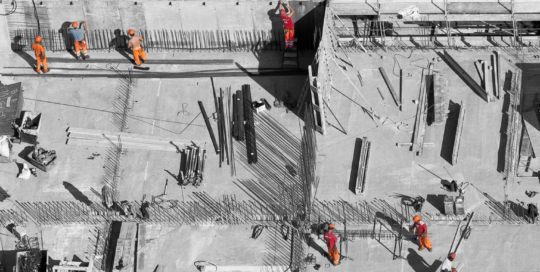
Trying to Smart-In-Up and Cleanup Our Act by Linking Regional Growth Planning, Brownfields Remediation, and Urban Infill in Southern Ontario Cities
Catherine Huynh 2018-11-21T08:09:37-05:00Trying to Smart-In-Up and Cleanup Our Act by Linking Regional Growth Planning, Brownfields Remediation, and Urban Infill in Southern Ontario Cities The reuse of brownfields as locations for urban intensification has become a core strategy in government sustainability efforts aimed at remediating pollution, curbing sprawl and prioritizing renewal, regeneration, and retrofitting. In Ontario, Canada’s most populous, industrialized, and brownfield-laden province, a suite of progressive policies and programs have been introduced to not only facilitate the assessment and remediation of the brownfields supply, but to also steer de- velopment demand away from peripheral greenfields and towards urban brownfields in a manner that considers a wider regional perspective. This article examines the character and extent of brownfields infill development that has taken place in three Ontario cities (Toronto, Waterloo, and Kingston) since the provincial policy shift in the early 2000s. Using property assessment data and cleanup records, the research finds that redevelopment activity has been extensive in both scale and character, particularly in Toronto where the real estate market has been strong. While the results are promising in terms of government efforts to promote smarter growth that builds “in [...]
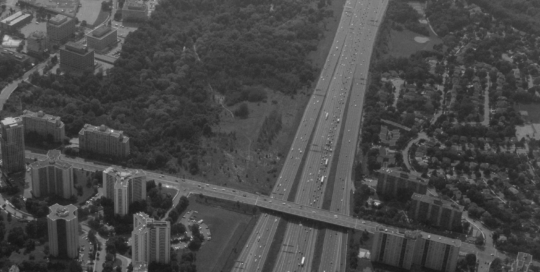
The Management of Brownfields in Ontario: A Comprehensive Review of Remediation and Reuse Characteristics, Trends, and Outcomes
Catherine Huynh 2019-07-08T20:00:30-04:00The Management of Brownfields in Ontario: A Comprehensive Review of Remediation and Reuse Characteristics, Trends, and Outcomes Brownfields remediation and redevelopment continues to be an important issue for policy makers and planners seeking to unlock its many socio-economic and environmental benefits. While technical approaches to assessment and remediation have become rather standardized and governments have largely embraced voluntary programs to oversee their application, the degree of regulatory oversight continues to differ among jurisdictions. This article examines the scale and character of remediation activity in Ontario, Canada over the last decade using records submitted by qualified persons from the private sector. It finds that Ontario’s approach has been quite successful in scale and character in stronger urban real estate markets despite most matters related to cleanup and reuse escaping the direct oversight of provincial regulators. The province’s less-interventionist approach may need some review to address the nature of cleanup techniques being applied and the recent slowdown in cleanup and reuse activity, especially given the growing push toward regional growth management and more effective use of brownfield land resources in both larger urban areas, and smaller ones where greenfields [...]
Milwaukee’s Brownfields: Redevelopment and Environmental Equity?
Catherine Huynh 2018-11-21T08:13:36-05:00Milwaukee’s Brownfields: Redevelopment and Environmental Equity? Funding Agency: University of Wisconsin-Milwaukee Graduate School Research Committee Award. Project goals: (a) To examine whether there are environmental equity issues associated with the redevelopment of brownfields that have been supported by public funds in Milwaukee (using Geographic Information System (GIS) mapping analysis based on federal, state, and local brownfields lists, and US Census Bureau and other public geo-referenced socioeconomic and related data); (b) To research private-sector developer experiences concerning brownfield redevelopment in Milwaukee (based on developer interviews). The specific objectives of this research are: To systematically evaluate the experience of those private-sector developers who have redeveloped brownfields using public funds, in terms of which sites were selected, why, the actual obstacles encountered, and the mechanisms for overcoming them; To determine whether the spatial distribution of redeveloped brownfields highlights problems of environmental inequity, in terms of the extent to which redevelopment supported by public funds has/has not occurred in the most distressed neighborhoods; To ascertain the insights of private developers about the potential for redevelopment of the less marketable brownfields in the most distressed neighborhoods.
Brownfield Redevelopment in Canadian Cities – Examining the Role of Local Government
Catherine Huynh 2018-09-30T21:35:33-04:00Brownfield Redevelopment in Canadian Cities – Examining the Role of Local Government Funding Agency: Consul General of Canada, Washington D.C., Canadian Studies Research Program Project Goals: to gain a better understanding of the nature of the brownfields problem in Canadian cities and to investigate the role of local government in dealing with it “on the ground.” The specific objectives are: To gather information on the scale and character of the brownfields problem and of redevelopment activity in Canadian cities over the last half decade; To investigate the factors contributing to the creation and redevelopment of brownfields in those cities, as well as the barriers and benefits associated with such redevelopment; To examine the role of local government in managing and facilitating redevelopment activity, as it relates to regulatory, financial, technical, and other issues; To collect information from local government officials regarding the actions of other public- and private-sector stakeholders in the redevelopment process and additional support they require for furthering redevelopment activity; and To collect available information on brownfield redevelopment performance or outcomes (e.g., land cleaned up, property redeveloped, jobs created, etc.).
